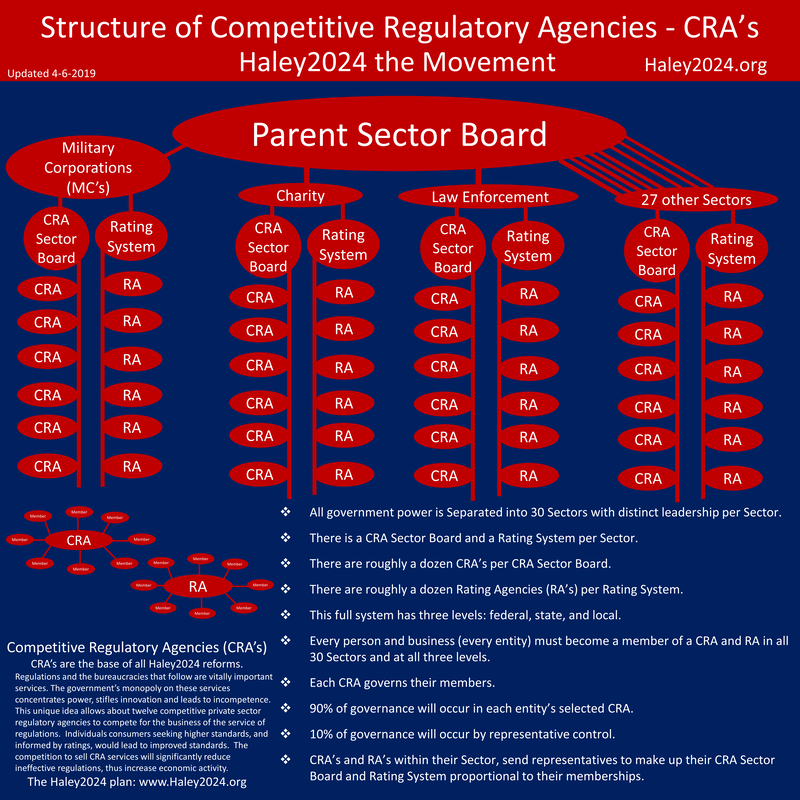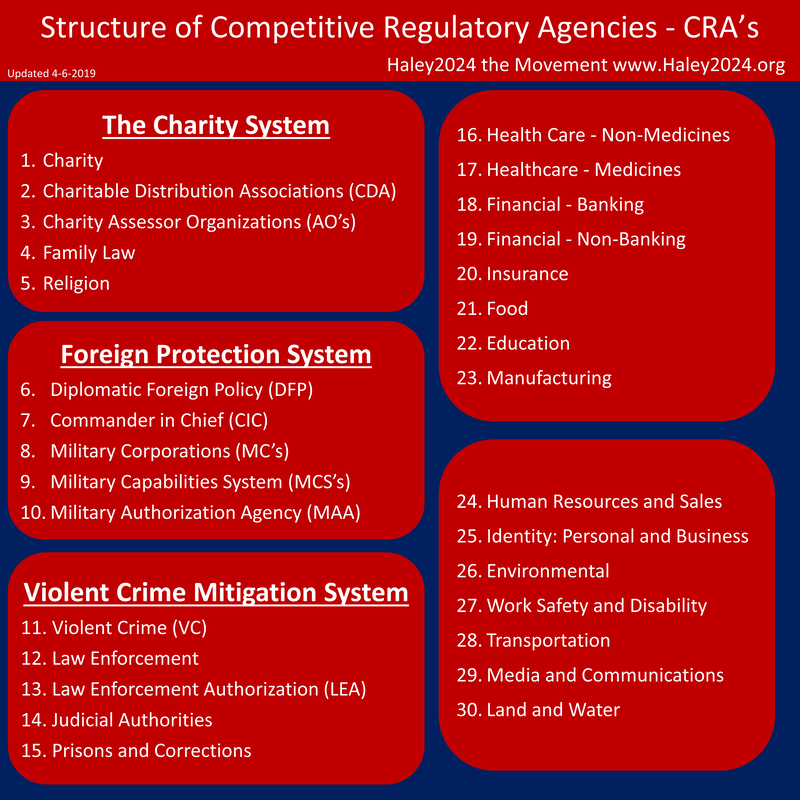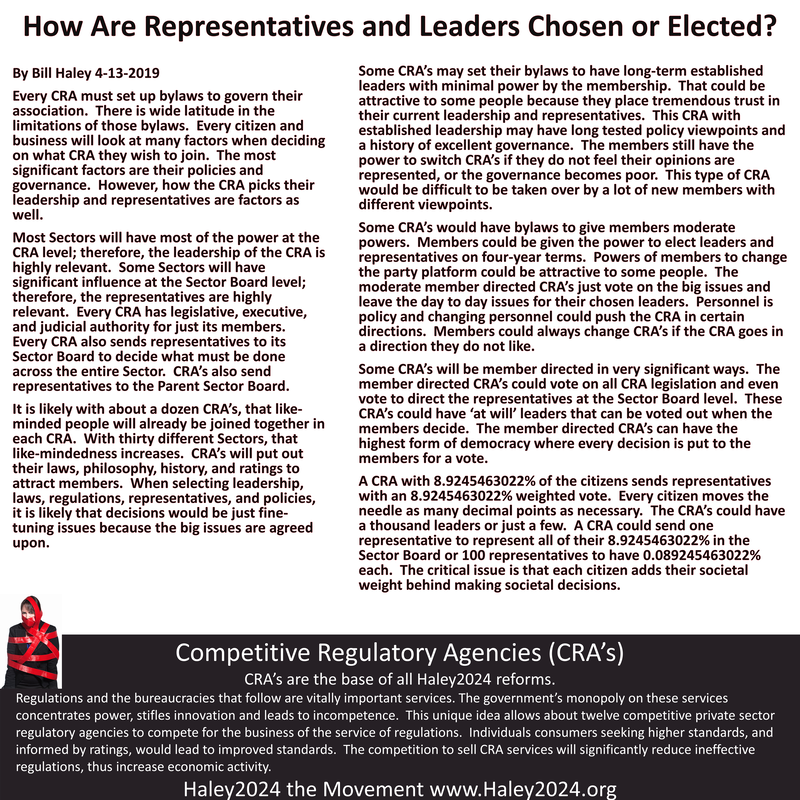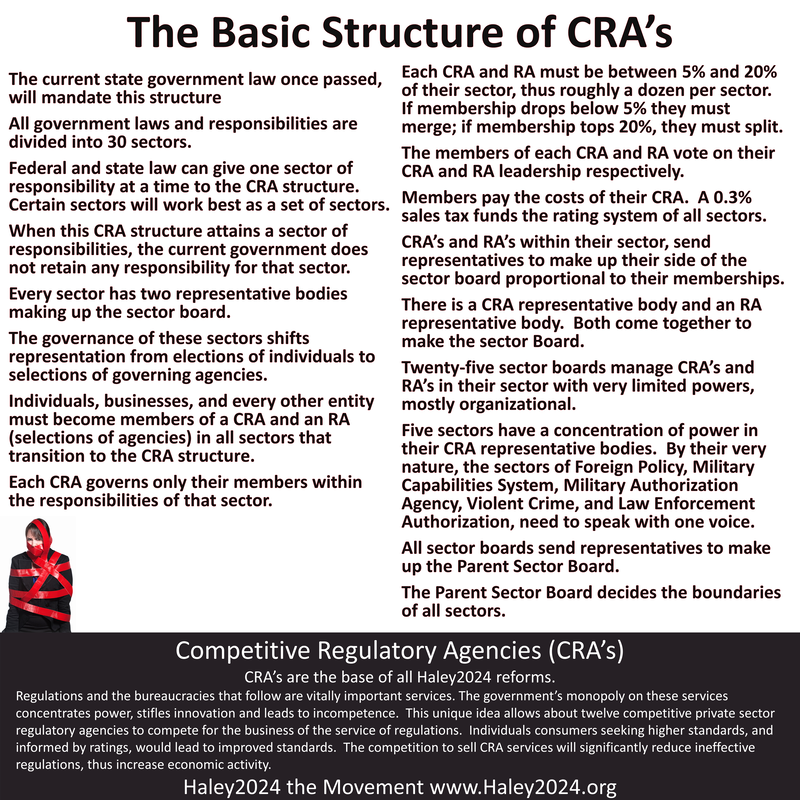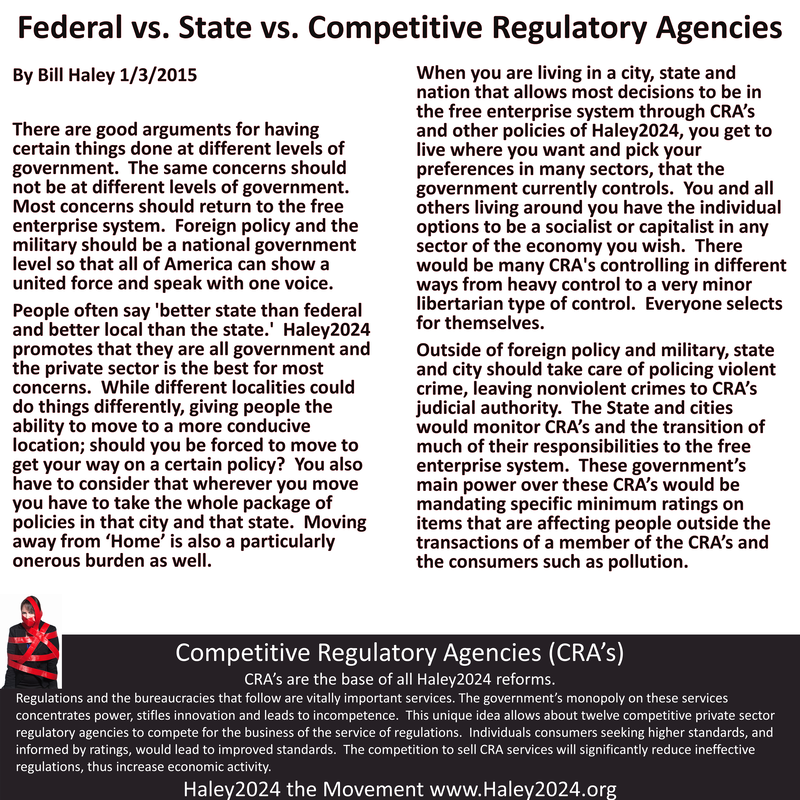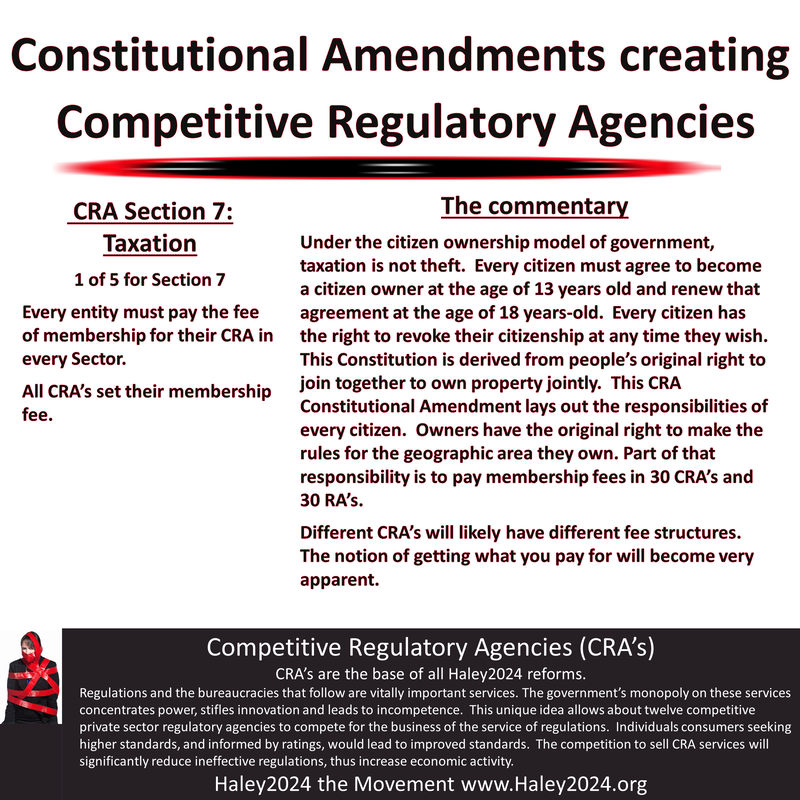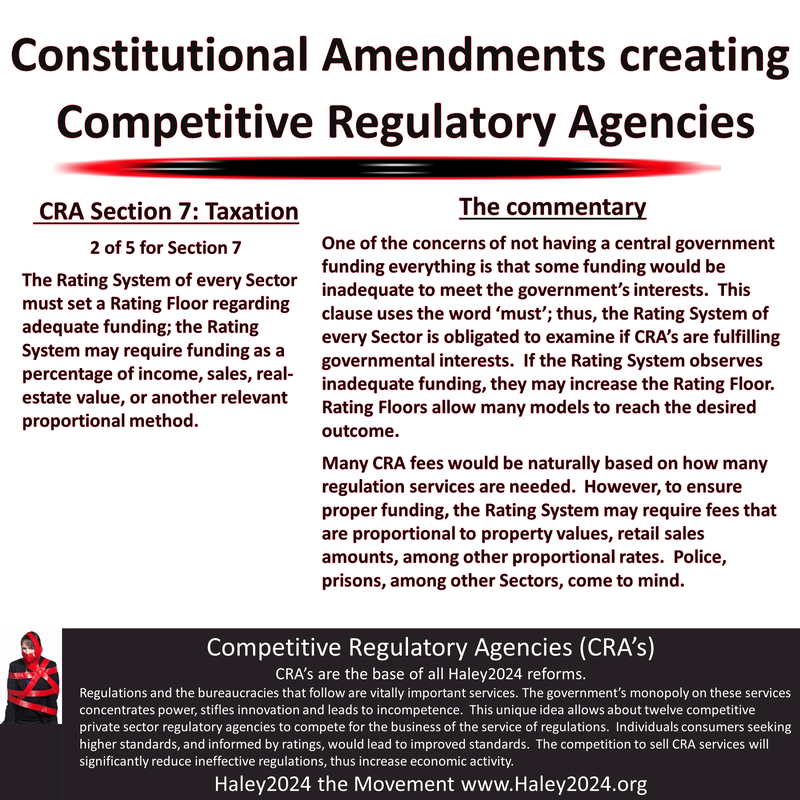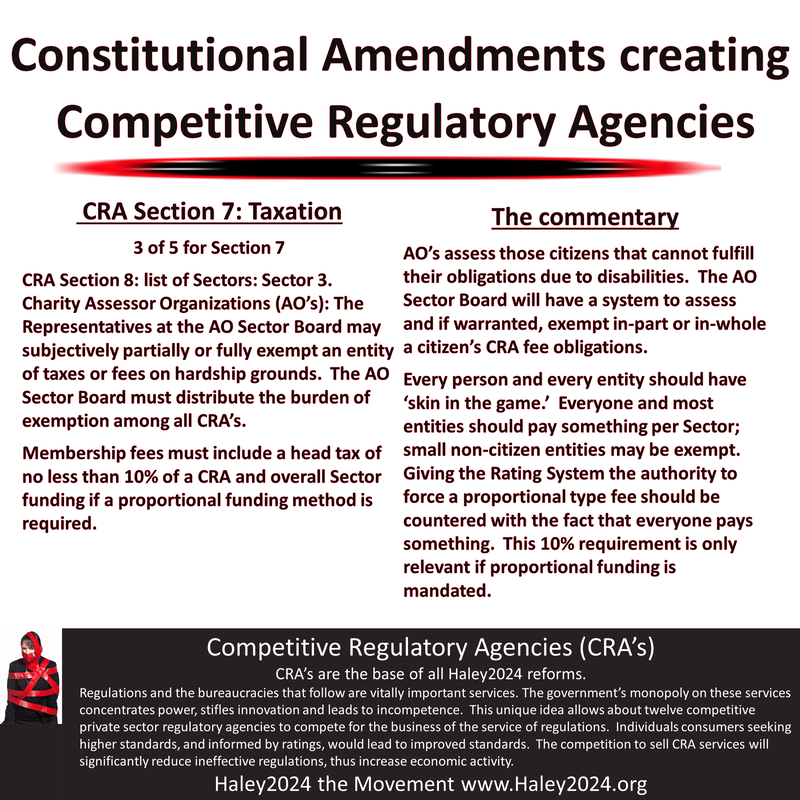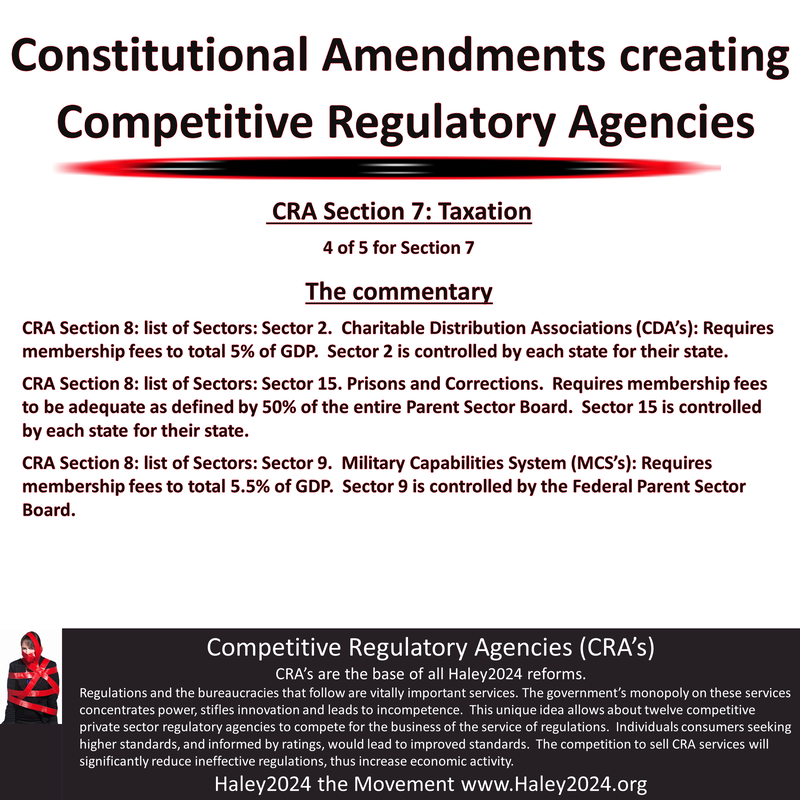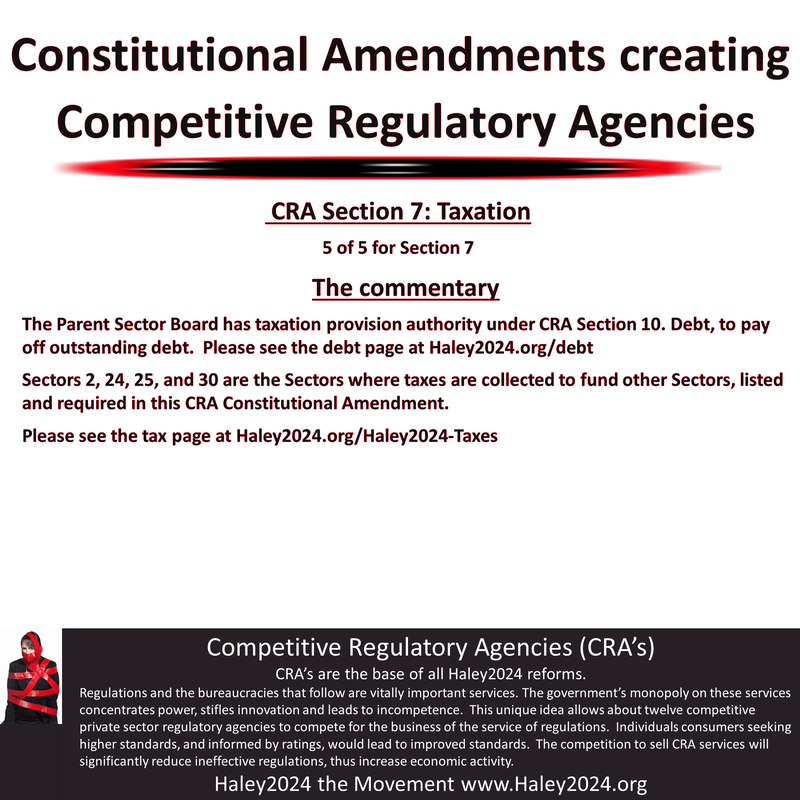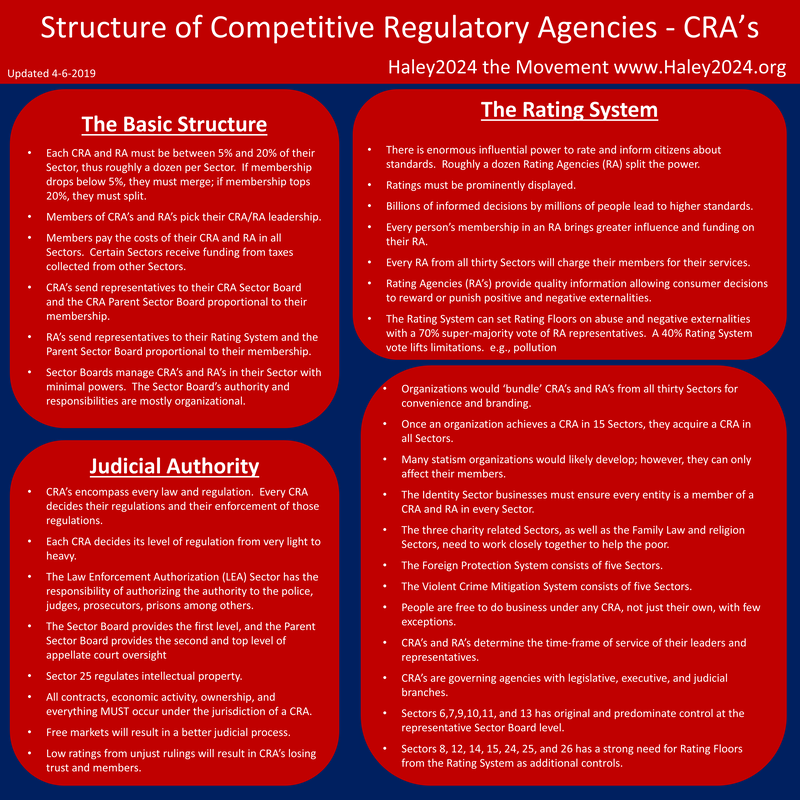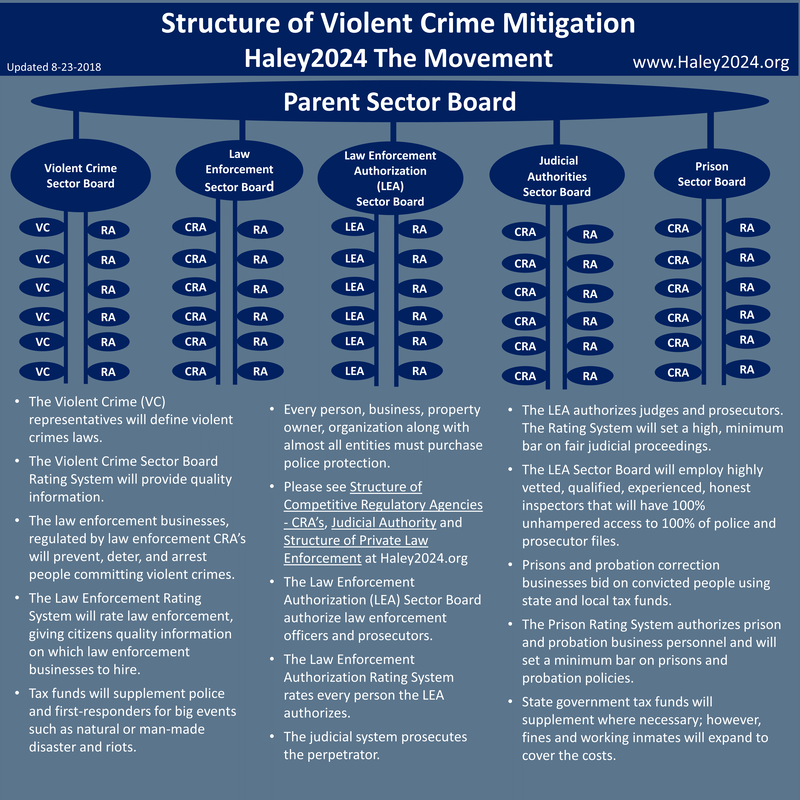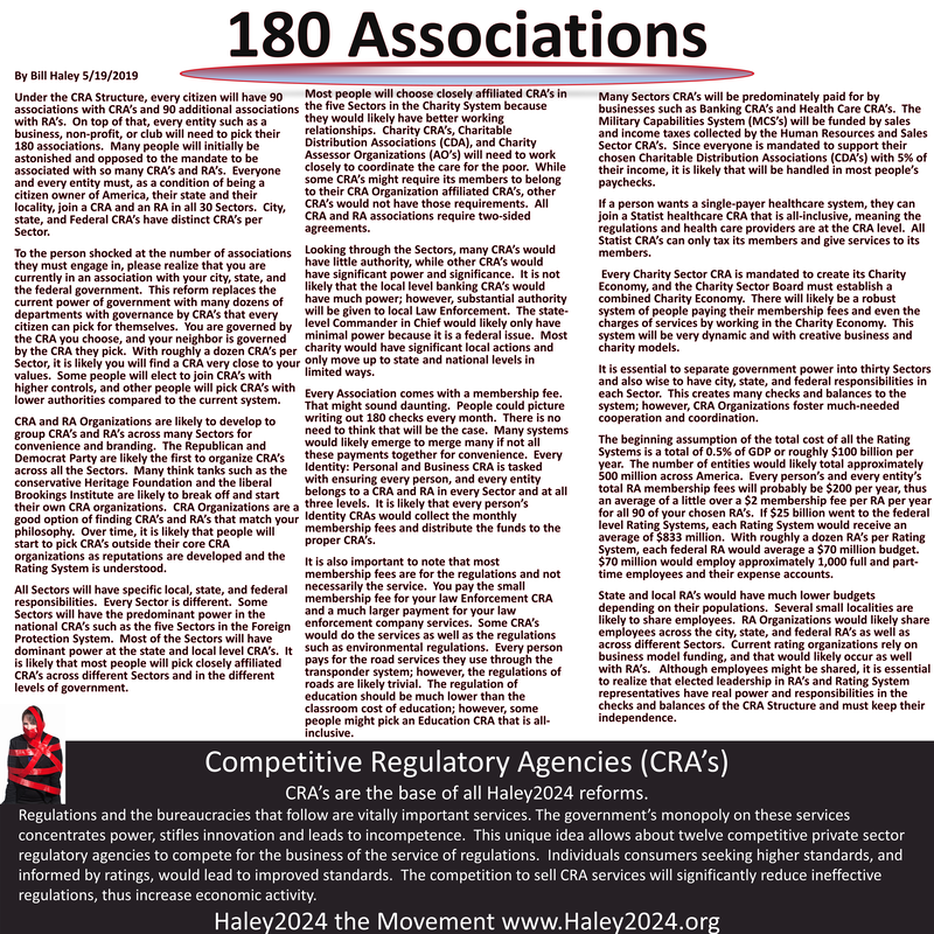| By Bill Haley Under the CRA Structure, every citizen will have 90 associations with CRA’s and 90 additional associations with RA’s. On top of that, every entity such as a business, non-profit, or club will need to pick their 180 associations. Many people will initially be astonished and opposed to the mandate to be associated with so many CRA’s and RA’s. Everyone and every entity must, as a condition of being a citizen owner of America, their state and their locality, join a CRA and an RA in all 30 Sectors. City, state, and Federal CRA’s have distinct CRA’s per Sector. |
| To the person shocked at the number of associations they must engage in, please realize that you are currently in an association with your city, state, and the federal government. This reform replaces the current power of government with many dozens of departments with governance by CRA’s that every citizen can pick for themselves. You are governed by the CRA you choose, and your neighbor is governed by the CRA they pick. With roughly a dozen CRA’s per Sector, it is likely you will find a CRA very close to your values. Some people will elect to join CRA’s with higher controls, and other people will pick CRA’s with lower authorities compared to the current system. |
| CRA and RA Organizations are likely to develop to group CRA’s and RA’s across many Sectors for convenience and branding. The Republican and Democrat Party are likely the first to organize CRA’s across all the Sectors. Many think tanks such as the conservative Heritage Foundation and the liberal Brookings Institute are likely to break off and start their own CRA organizations. CRA Organizations are a good option of finding CRA’s and RA’s that match your philosophy. Over time, it is likely that people will start to pick CRA’s outside their core CRA organizations as reputations are developed and the Rating System is understood. |
| All Sectors will have specific local, state, and federal responsibilities. Every Sector is different. Some Sectors will have the predominant power in the national CRA’s such as the five Sectors in the Foreign Protection System. Most of the Sectors will have dominant power at the state and local level CRA’s. It is likely that most people will pick closely affiliated CRA’s across different Sectors and in the different levels of government. |
| Most people will choose closely affiliated CRA’s in the five Sectors in the Charity System because they would likely have better working relationships. Charity CRA’s, Charitable Distribution Associations (CDA), and Charity Assessor Organizations (AO’s) will need to work closely to coordinate the care for the poor. While some CRA’s might require its members to belong to their CRA Organization affiliated CRA’s, other CRA’s would not have those requirements. All CRA and RA associations require two-sided agreements. |
| Looking through the Sectors, many CRA’s would have little authority, while other CRA’s would have significant power and significance. It is not likely that the local level banking CRA’s would have much power; however, substantial authority will be given to local Law Enforcement. The state-level Commander in Chief would likely only have minimal power because it is a federal issue. Most charity would have significant local actions and only move up to state and national levels in limited ways. |
| Every Association comes with a membership fee. That might sound daunting. People could picture writing out 180 checks every month. There is no need to think that will be the case. Many systems would likely emerge to merge many if not all these payments together for convenience. Every Identity: Personal and Business CRA is tasked with ensuring every person, and every entity belongs to a CRA and RA in every Sector and at all three levels. It is likely that every person’s Identity CRAs would collect the monthly membership fees and distribute the funds to the proper CRA’s. |
| It is also important to note that most membership fees are for the regulations and not necessarily the service. You pay the small membership fee for your law Enforcement CRA and a much larger payment for your law enforcement company services. Some CRA’s would do the services as well as the regulations such as environmental regulations. Every person pays for the road services they use through the transponder system; however, the regulations of roads are likely trivial. The regulation of education should be much lower than the classroom cost of education; however, some people might pick an Education CRA that is all-inclusive. |
| Many Sectors CRA’s will be predominately paid for by businesses such as Banking CRA’s and Health Care CRA’s. The Military Capabilities System (MCS’s) will be funded by sales and income taxes collected by the Human Resources and Sales Sector CRA’s. Since everyone is mandated to support their chosen Charitable Distribution Associations (CDA’s) with 5% of their income, it is likely that will be handled in most people’s paychecks. |
| Every Charity Sector CRA is mandated to create its Charity Economy, and the Charity Sector Board must establish a combined Charity Economy. There will likely be a robust system of people paying their membership fees and even the charges of services by working in the Charity Economy. This system will be very dynamic and with creative business and charity models. |
| The beginning assumption of the total cost of all the Rating Systems is a total of 0.5% of GDP or roughly $100 billion per year. The number of entities would likely total approximately 500 million across America. Every person’s and every entity’s total RA membership fees will probably be $200 per year, thus an average of a little over a $2 membership fee per RA per year for all 90 of your chosen RA’s. If $25 billion went to the federal level Rating Systems, each Rating System would receive an average of $833 million. With roughly a dozen RA’s per Rating System, each federal RA would average a $70 million budget. $70 million would employ approximately 1,000 full and part-time employees and their expense accounts. |
| State and local RA’s would have much lower budgets depending on their populations. Several small localities are likely to share employees. RA Organizations would likely share employees across the city, state, and federal RA’s as well as across different Sectors. Current rating organizations rely on business model funding, and that would likely occur as well with RA’s. Although employees might be shared, it is essential to realize that elected leadership in RA’s and Rating System representatives have real power and responsibilities in the checks and balances of the CRA Structure and must keep their independence. |
